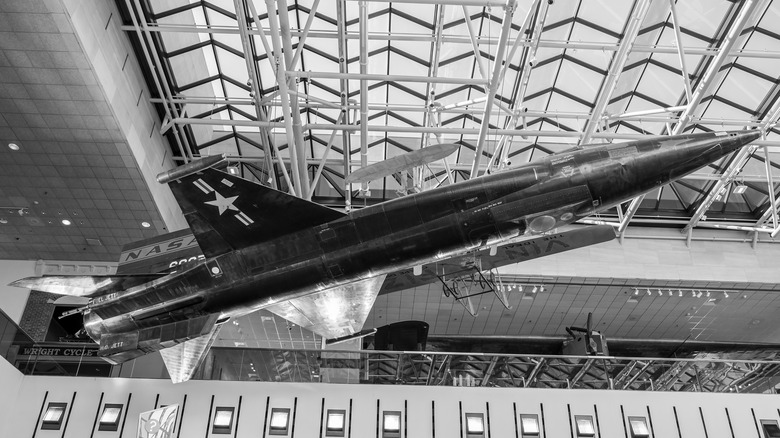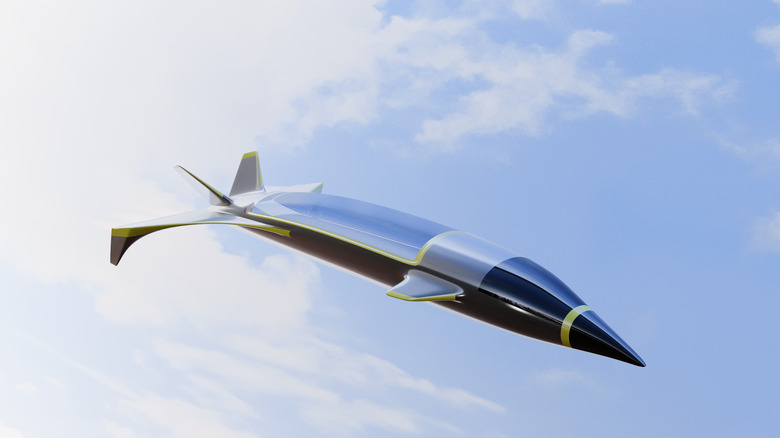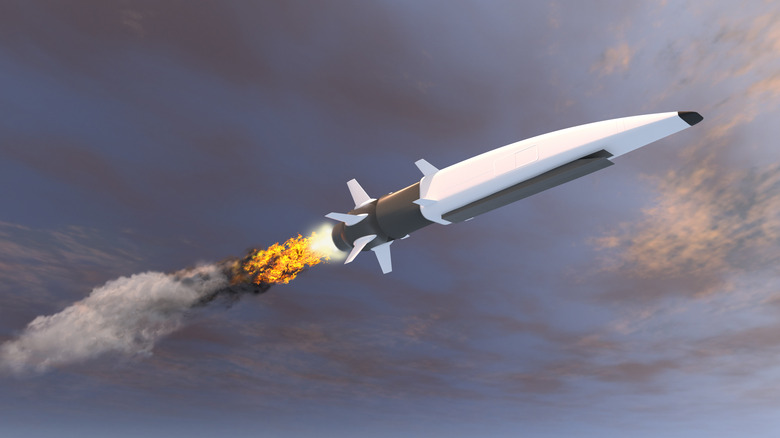How Fast Is Hypersonic Flight And How Does It Work?
In May of 1899, the famed Wilbur Wright wrote to the Smithsonian Institution, "I have been interested in the problem of mechanical and human flight ever since as a boy I constructed a number of bats of various sizes after the style of Cayley's and Penaud's machines." He had been devotedly studying the issue of human flight ever since, he wrote, and concluded that "it is only a question of knowledge and skill."
The knowledge and skill of the Wright brothers, clearly, was extensive, but so too has been that of the generations of scientists, technicians, pilots, and many more professionals who followed. Humanity would never have reached the moon in one of the Wrights' relatively primitive craft, after all. For the historic first flight in 1903, the speed in the air was a modest 34 mph.
Around 103 years later, naturally, aviation technology is nearly unrecognizable from the days of the Wright brothers. Today, the world's finest aeronautical minds are grappling with the concept of hypersonic flight and how it can be harnessed. Here's the speed of hypersonic flight, and how it can be achieved.
Exactly how fast is hypersonic flight?
Hypersonic flight travels at more than five times the speed of sound. Mach 5 and above is deemed hypersonic. Mark Lewis of the Science and Technology Policy Institute in Washington explained in 2018, per NASA (always at the forefront of all things aeronautics), that this is generally understood to be a speed of 3,806 mph (6,126 kmph).
Flying Magazine states that, by contrast, the average commercial flight carries passengers at a cruising pace of up to approximately 600 mph (965.6 kmph). Hypersonic flight, is more than a sixfold increase in speed. Some aircraft have proven to be capable of much greater speeds than even that. In 2011, Space reported that the Falcon Hypersonic Technology Vehicle 2 embarked on a test flight from Vandenberg Air Force Base. DARPA's Regina Dugan boasted, "HTV-2 demonstrated stable, aerodynamically controlled Mach 20 hypersonic flight for approximately three minutes." According to the outlet, Mach 20 amounts to, approximately, an extraordinary around 15,000 mph.
Needless to say, travel at these sorts of speeds would be an incredible boon in some areas. Most plainly, flight times would be cut immensely. Defense company BAE Systems states that a Mach 5 flight to Melbourne from Adelaide in Australia might last just six minutes. As tempting as super-short flights may be, though, hypersonic flight is a tricky beast indeed. Here's how it works, and why the average airline won't be rocketing jetsetters around the world just yet.
How hypersonic flight works
Rocket engines are the conventional means of hypersonic flight, which isn't something that's plausible, cost-effective or anything else in a hypothetical commercial flight scenario. According to NASA, spacecraft, appropriately, are largely hypersonic. The primary danger of movement at such a speed is the outrageous amount of heat generated, which is precisely why companies such as BAE Systems commit to research into the effects of such high temperatures on the mechanics and structure of an aircraft and how to address them.
A 2016 paper called "Lightweight Composite Structures in Transport: Design, Manufacturing, Analysis and Performance" explains that rocket propulsion tends to be utilized in hypersonic flight because it's a means of launching a craft and reaching the point at which its true hypersonic capabilities can be utilized, according to Science Direct. A company called Hermeus' hybrid engine neatly underscores the way hypersonic flight works: It's a dual-functional system with a conventional turbojet for take-off, which then funnels air into the ramjet that will launch the craft to Mach 5 and beyond. This is necessary because ramjet and scramjet systems focus on maintaining and exceeding super high speeds rather than reaching them in the first place.
Hypersonic missiles, according to the BBC in April 2022, are truly unpredictable because of their speed and maneuverability, and the difficulty of tracking some variants due to their low flight pattern. Cruise missiles do just that, while other versions, glide missiles, travel down from space. The experimental U.S. hypersonic bomber may well revolutionize warfare further.


